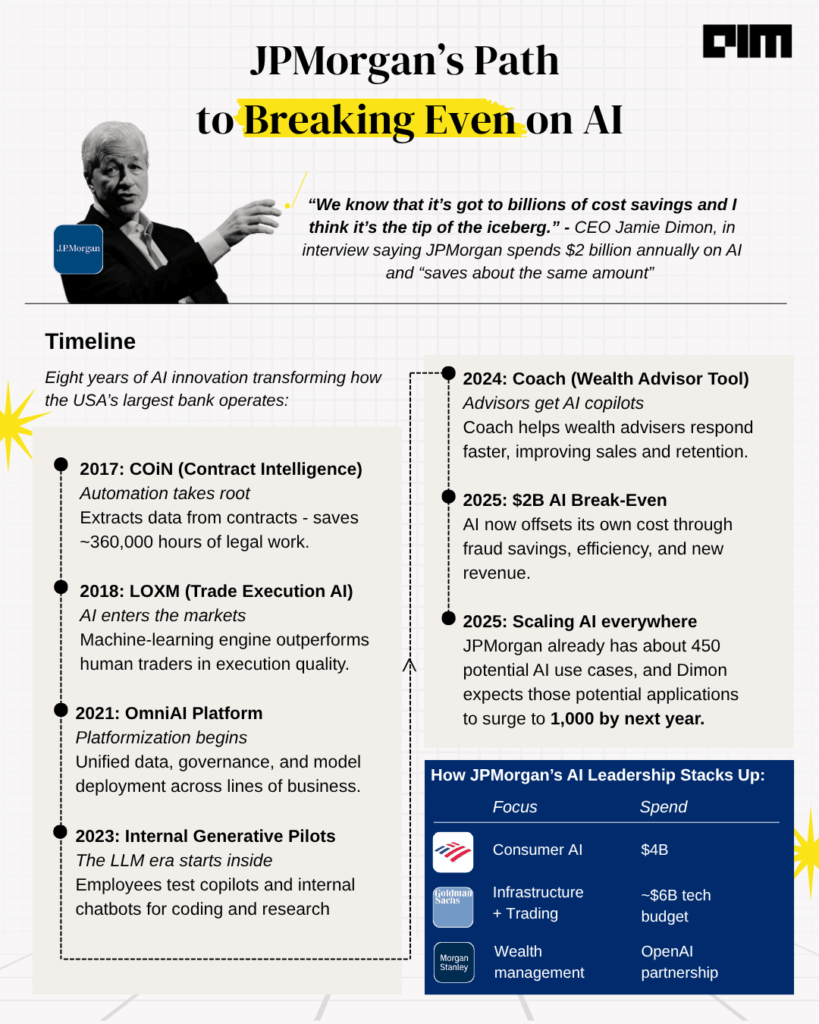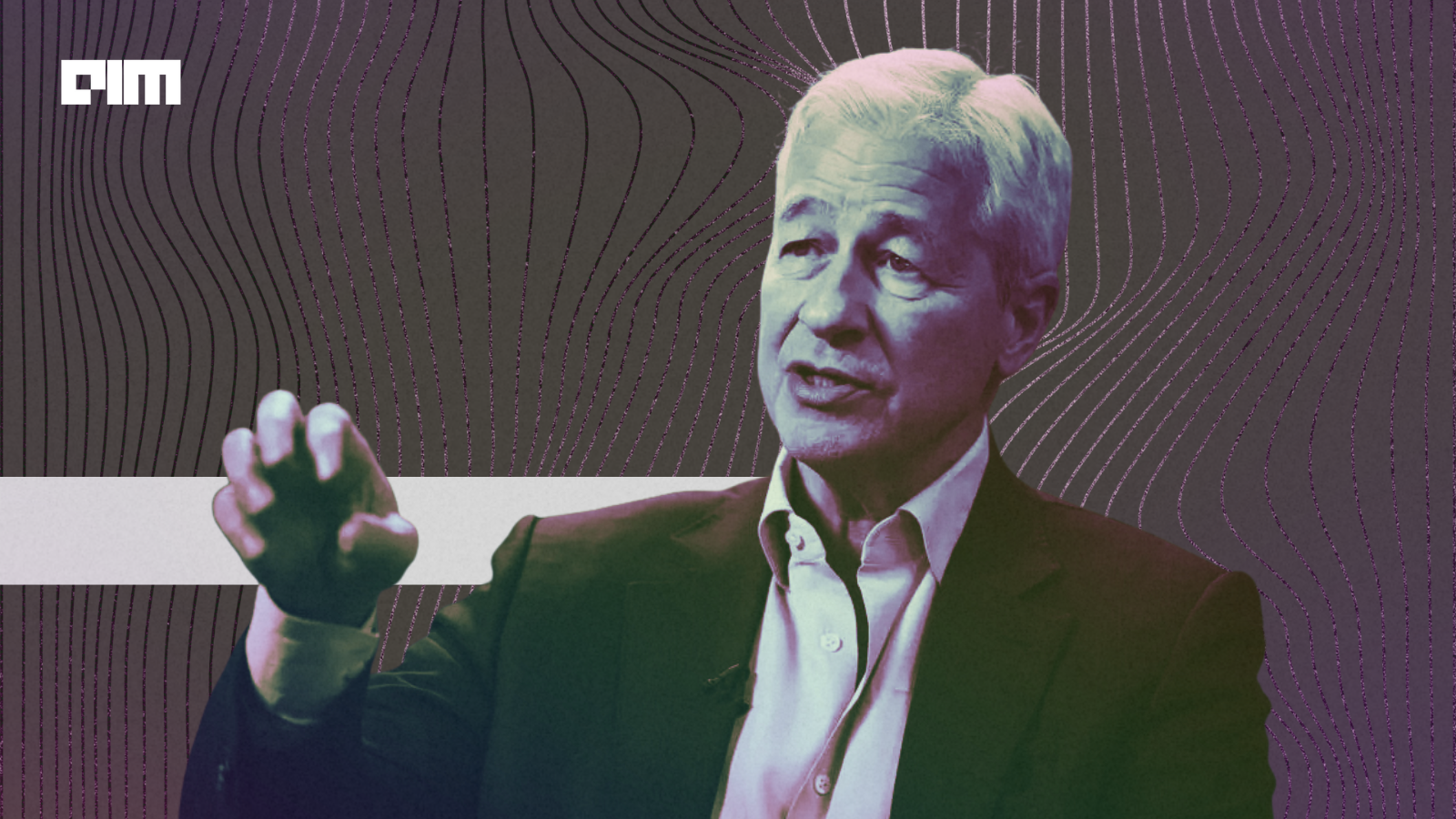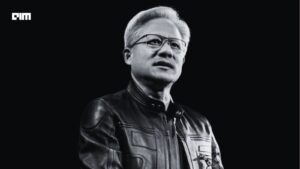Jamie Dimon, chief executive officer of JPMorgan Chase, just said the bank now spends about $2 billion a year on artificial intelligence and has achieved roughly the same amount in annual savings. The remarks, made in an Bloomberg Television interview, are among the clearest public assessments of AI’s financial impact by a major financial institution.
“We spend $2 billion a year on developing artificial intelligence technology, and save about the same amount annually from the investment,” Dimon said. “We have shown that for $2 billion of expense, we have about $2 billion of benefit. Some we actually can do real detail. We did this, we reduced headcount, saved this time and money. We know about $2 billion of actual cost saves. And I think it’s the tip of the iceberg.”
His comments follow a period of broad AI deployment at the bank. Dimon has said about 150,000 employees use AI tools each week. Internal figures reported by the European Financial Review show JPMorgan’s large-language-model suite is available to roughly 250,000 employees, excluding branch and call-center staff. The systems support work in trading, risk management, fraud detection, software development, and customer service.
In March 2025, Reuters reported that engineering teams using JPMorgan’s internal coding assistants saw efficiency gains between 10 and 20 percent, allowing developers to focus on higher-value work. Another Reuters report in May 2025 said AI systems helped advisers handle increased client activity during market volatility. These documented outcomes suggest that AI is contributing measurable productivity and cost benefits.

Derek Waldron, the bank’s Chief Analytics Officer, has described the goal as creating a “fully AI-connected enterprise,” where employees have personalized assistants and key processes are automated through machine-learning models. He acknowledged that despite progress, there remains a “value gap” between the technology’s potential and the company’s ability to capture it across all business functions.
JPMorgan’s work in AI stretches back nearly a decade. Early tools such as COiN, used for contract review, and LOXM, an algorithmic trading platform, built the foundation for later systems like Coach and Omni, which extend automation and decision support across operations. The company’s continued technology spending and hiring have allowed these systems to move from isolated pilots to daily production use.
Among major U.S. banks, JPMorgan is the first to publicly state that AI investment is now cost-neutral. Goldman Sachs, Bank of America, and Morgan Stanley have each highlighted AI as a productivity enhancer but have not reported equivalent savings figures. JPMorgan’s $2 billion AI budget is part of an overall technology spend exceeding $15 billion in 2024, one of the largest commitments in global finance.
The bank has filed dozens of patents related to model management and continues to recruit specialists in applied AI and data governance. Reported savings stem from automation in compliance checks, document analysis, and fraud prevention, areas that benefit from high-volume data processing. In software development, AI tools shorten code-review cycles; in client service, automated summarization reduces turnaround times.
JPMorgan has not released a full accounting of how the $2 billion in annual savings is measured. Dimon indicated that some savings are easily quantifiable, such as lower headcount or reduced processing costs, while others, like faster execution and fewer manual errors, are captured internally through efficiency metrics.
The company has also acknowledged the expense of scaling and oversight. Model validation, retraining, and regulatory auditing add ongoing costs as AI expands across divisions. Governance frameworks for model risk and explainability have been formalized to meet supervisory expectations in the United States and abroad.
Lori Beer, the bank’s global Chief Information Officer, has described AI as “core infrastructure,” comparable to payment systems or cybersecurity, underscoring that it is embedded throughout the organization rather than confined to research teams.
The impact on employees has centered on changes to task allocation rather than large-scale layoffs. Automation has reduced repetitive work, while staff in areas such as compliance and risk have been retrained to oversee AI systems. JPMorgan continues to expand its AI and analytics teams, which already include more than 2,000 specialists, according to the company’s 2024 shareholder letter.
Dimon’s assertion that JPMorgan’s AI program has reached cost-benefit parity provides a measurable benchmark for financial institutions integrating artificial intelligence into daily operations. Other banks have not disclosed comparable figures, leaving JPMorgan’s statement as one of the few quantifiable examples of large-scale AI deployment producing firm-level savings.











